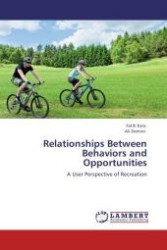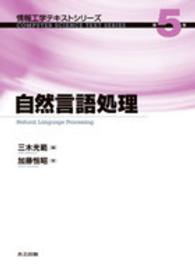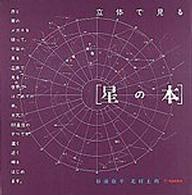Full Description
Using her unique M-A-P approach (Model-Analysis-Practice), Susan Fawcett's books have guided hundreds of thousands of students through the writing process, from foundations of grammar, mechanics, and spelling through writing clear sentences and well-organized paragraphs. Her inductive approach; plentiful, high-interest student models and practices; and contemporary readings engage and motivate students.
This new Eleventh Edition of GRASSROOTS triples the writing coverage-with new Chapters 5 and 6, "Thinking Through the Writing Patterns." Also featured are new critical-thinking and viewing assignments throughout; eight fresh reading selections focused on issues and ideas, not narrative; and a new emphasis on academic and third-person writing.
Contents
Preface.
Unit 1: WRITING EFFECTIVE PARAGRAPHS.
Each chapter in Unit 1 includes "Spotlight on Reading and Writing," end-of-chapter features Chapter Highlights and Exploring Online.
1. Exploring the Writing Process.
A. The Writing Process. B. Subject, Audience, and Purpose. C. Guidelines for Submitting Written Work.
2. Prewriting to Generate Ideas.
A. Freewriting. B. Brainstorming. C. Clustering. D. Keeping a Journal.
3. Developing Effective Paragraphs.
A. Defining the Paragraph and the Topic Sentence. B. Narrowing the Topic and Writing the Topic Sentence. C. Generating Ideas for the Body of the Paragraph. D. Selecting and Dropping Ideas. E. Arranging Ideas in a Plan or an Outline. F. Writing and Revising the Paragraph. G. Proofreading and Writing the Final Draft.
4. Improving Your Paragraphs.
A. More Work on Arranging Ideas: Coherence. B. More Work on Revising: Exact and Concise Language. C. Turning Assignments into Paragraphs.
5. Thinking Through Paragraph Patterns, Part 1.
A. Illustration. B. Narration. C. Description. D. Process. E. Comparison/Contrast.
6 Thinking Through Paragraph Patterns, Part 2
A. Classification. B. Cause and Effect. C. Definition. D. Persuasion
7. Moving from Paragraph to Essay.
A. Defining the Essay and the Thesis Statement. B. The Process of Writing an Essay.
8. Proofreading to Correct Your Personal Errors.
A. Identifying and Tracking Your Personal Error Patterns. B. Proofreading Strategies.
Unit 1. Writing Assignments.
Unit 1. Review.
Unit 1. Writers' Workshop: Discuss Your Name.
Unit 2: WRITING COMPLETE SENTENCES.
Each chapter in Unit 2 includes "Spotlight on Reading and Writing," end-of-chapter features Chapter Highlights, Proofreading Strategy, Writing and Proofreading Assignments, Chapter Review, and Exploring Online.
9. Subjects and Verbs.
A. Defining and Spotting Subjects. B. Spotting Singular and Plural Subjects. C. Spotting Prepositional Phrases. D. Defining and Spotting Action Verbs. E. Defining and Spotting Linking Verbs. F. Spotting Verbs of More Than One Word.
10. Avoiding Sentence Fragments.
A. Writing Sentences with Subjects and Verbs. B. Writing Sentences with Complete Verbs. C. Completing the Thought.
Unit 2. Writing Assignments.
Unit 2. Review.
Unit 2. Writers' Workshop: Discuss an Event That Influenced You.
Unit 3: USING VERBS EFFECTIVELY.
Each chapter in Unit 3 includes "Spotlight on Reading and Writing," end-of-chapter features Chapter Highlights, Proofreading Strategy, Writing and Proofreading Assignments, Chapter Review, and Exploring Online
11. Present Tense (Agreement).
A. Defining Agreement. B. Verbs in the Present Tense: TO BE, TO HAVE, and TO DO (+ NOT).
C. Changing Subjects to Pronouns. D. Practice in Agreement. E. Special Problems in Agreement.
12. Past Tense.
A. Regular Verbs in the Past Tense. B. Irregular Verbs in the Past Tense. C. Troublesome Verb in the Past Tense: TO BE. D. Review.
13. The Past Participle in Action.
A. Past Participles of Regular Verbs. B. Past Participles of Irregular Verbs. C. Using the Present Perfect Tense. D. Using the Past Perfect Tense. E. Using the Passive Voice. F. Using Past Participles as Adjectives.
14. Progressive Tenses (TO BE + -ING Verb Form).
A. Defining and Writing the Present Progressive Tense. B. Defining and Writing the Past Progressive Tense. C. Using the Progressive Tenses. D. Avoiding Incomplete Progressives.
15. Fixed-Form Helping Verbs and Verb Problems.
A. Defining and Spotting the Fixed-Form Helping Verbs. B. Using the Fixed-Form Helping Verbs. C. Using CAN and COULD. D. Using WILL and WOULD. E. Writing Infinitives. F. Revising Double Negatives.
Unit 3. Writing Assignments.
Unit 3. Review.
Unit 3. Writers' Workshop: Tell a Family Story.
Unit 4: JOINING IDEAS TOGETHER.
Each chapter in Unit 4 includes end-of-chapter features "Spotlight on Reading and Writing," Chapter Highlights, Proofreading Strategy, Writing and Proofreading Assignments, Chapter Review, and Exploring Online.
16. Coordination.
17. Subordination.








